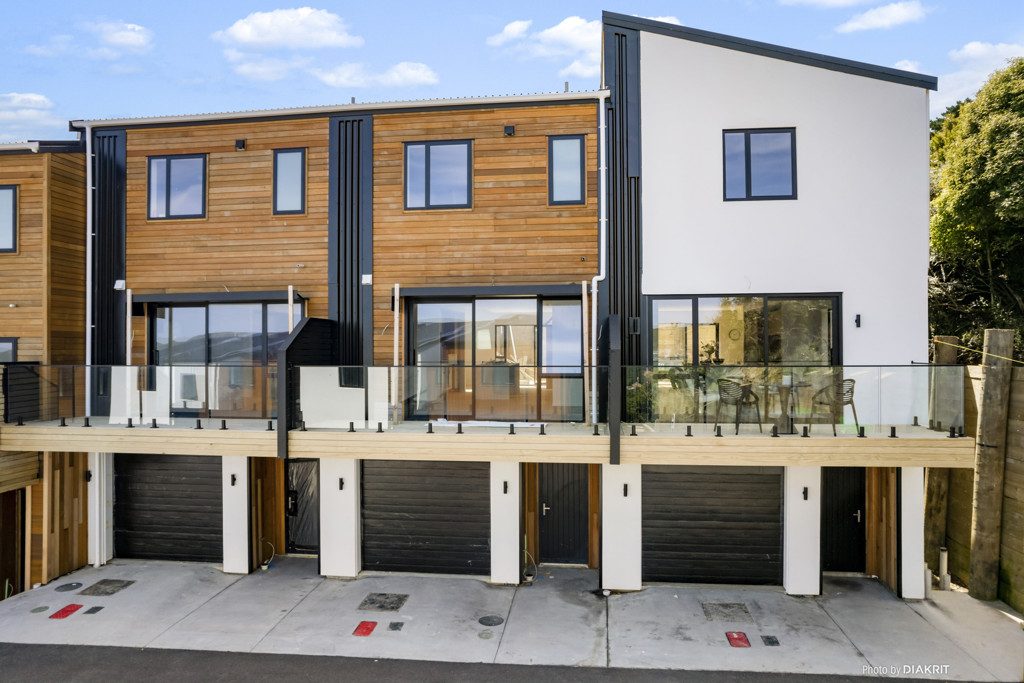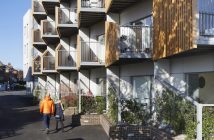Not every new build is a good investment, warns Laine Moger from OPES Partners

Problem #1 – New Builds and townhouses don’t go up in value that fast
Often people who invest in New Builds will buy a townhouse. That’s not always the case. You might also buy a house or an apartment. But, townhouses are a popular option.
Some online discussions say that “capital gain on townhouses is poor.” In other words, they think townhouses increase in value slower than houses.
Yes, this one is true. But the difference is marginal, and much smaller than you think.
There have been times when houses have increased in value faster than townhouses, but more recently that gap has narrowed.
Since 2014, Christchurch houses have increased in value just 0.2% faster than townhouses. So, if a house goes up in value by 7% a year, a townhouse goes up by 6.8% yearly. In Wellington, that margin was just 0.1%.
So, townhouses increase in value a bit slower, but they don’t lag substantially. Yet townhouses are cheaper and typically have higher yields.
So, the first step when looking at problems with New Builds (or in this case townhouses) is to check the data. You’ve got to make sure that the perceived “problem” is correct.
You don’t want to make a six-figure investment decision based on incorrect facts.
Problem #2 – It’s harder to sell a New Build
Some times people will say, “If you buy a New Build in a large development there will be lots of similar properties.
“A few of these properties will always be on the market at the same time. That can make it harder to sell your property.”
This is a good point and can be true in some cases. Some townhouse developments have 80+ units that are all identical. So when you come to sell your property, there could be an identical unit on the market at the same time. More of the same property means competition.
One way to get around this is to buy in either:
- a smaller development or
- one with several property designs and layouts.
Why? There’s a big difference between:
- buying in an 80-unit development where all units are the same
- And buying in an 80-unit development with 8 different property layouts and floor plans.
In the first scenario (1 layout), you may have 79 “competitors” when it comes time to sell.
In the second scenario (8 layouts), you have 9.
So, try to buy where the units aren’t all the same in a large development, or opt for a smaller development.
Problem #3 – New Builds don’t have as much land
This is true. Many New Builds don’t have large green spaces. A classic Kiwi quarter-acre section is 1,000 square metres. Today, a standard New Build 4-bedroom house might have 300-450sqm. Similarly, a townhouse might be on 75-125sqm.
But how much does this matter in terms of your investment?
Traditional thinking says that houses don’t grow in value, land does. By that logic, houses with more land should have increased in value faster, but that’s not what we see.
One recent data-crunching experiment found a property with 150sqm of land increased at the same rate as a 900sqm section.
Does this mean land has no value? Absolutely not.
Land is extremely valuable, that’s why properties with more land are more expensive. But a property with more land doesn’t increase in value more quickly than a house without land.
Problem #4 – You can’t renovate a New Build
Some property investors argue that you can’t renovate a New Build, so there is no opportunity to actively increase its value or cashflow.
This is true. But that is also the point of a New Build. You don’t have to renovate it. You don’t have to do anything with it.
Active investors want control over the value of their property. They want to hunt for one that is worn-down and in need of TLC. Their strategy is to renovate to increase its value.
But New Build investors want to take the easier option. They don’t want to renovate, they just want to buy and wait for the property to go up in value. It’s a passive investment.
This is very similar to investing in shares. You buy a share and wait for the market to improve its value.
This strategy won’t suit everyone, so if you prefer an active strategy New Builds won’t be the right fit for you.
In this instance, a BRRRR, a development or a flipping strategy, might be more up your alley.
Problem #5 – New Builds have less parking
Depending on the property you buy, your New Build may only have 1 car park. In some cases they won’t have any at all.
Some investors rightly question: “Is that enough?”
This is an important question: If you don’t have enough car parks, it could be harder to get a tenant.
The average Kiwi household has *roughly* 1.75 cars. So, many Kiwis will say the average is 2. But this 1.75 number masks the distribution of cars people actually have.
You can’t have three quarters of a car. You either have 0, 1, 2, 3, 4 or more.
In reality, the number of cars you have depends on whether you rent or own your home.
- 55% of renters have 0 or 1 car
- 67% of homeowners have 2 or more cars.
So renters need fewer car parks than homeowners.
And property investors need to know this.
You want to make sure you have enough parks to meet your potential customer’s expectations.
If you’re flipping a property, you will probably sell to an owner-occupier (homeowner). So you will likely need 2 or more car parks.
But, if you’re buying a property to rent for the long term, you’ll rent to a tenant. So it is likely you will only need to have 1 car park.
Problem #6 – “There is an oversupply of New Builds”
There is a lot of construction going on. That’s especially true in Christchurch and Auckland.
So some investors ask whether there is an oversupply of New Builds. Often they are specifically talking about townhouses.
This is a fair enough question. A decade ago, townhouses weren’t a thing.
Now, townhouses are 7x more popular. There are heaps of them being built.
This massive shift has led to a fear of oversupply and if there was an oversupply, you’d expect to see some evidence.
Things like:
- Townhouses take longer to sell than houses
- Townhouses fall in value more quickly
- Townhouses not going up in value as fast as other property types.
But in our data we didn’t see evidence of this.
Since 1992, it’s taken roughly the same time to sell a townhouse as it’s taken to sell a house.
Townhouse prices haven’t fallen more quickly compared to other types of properties.
So, we’re not seeing strong evidence that new stock is creating an oversupply.
And as we’ve already covered, houses have risen about 0.1-0.6% faster than townhouses, which is marginal.












